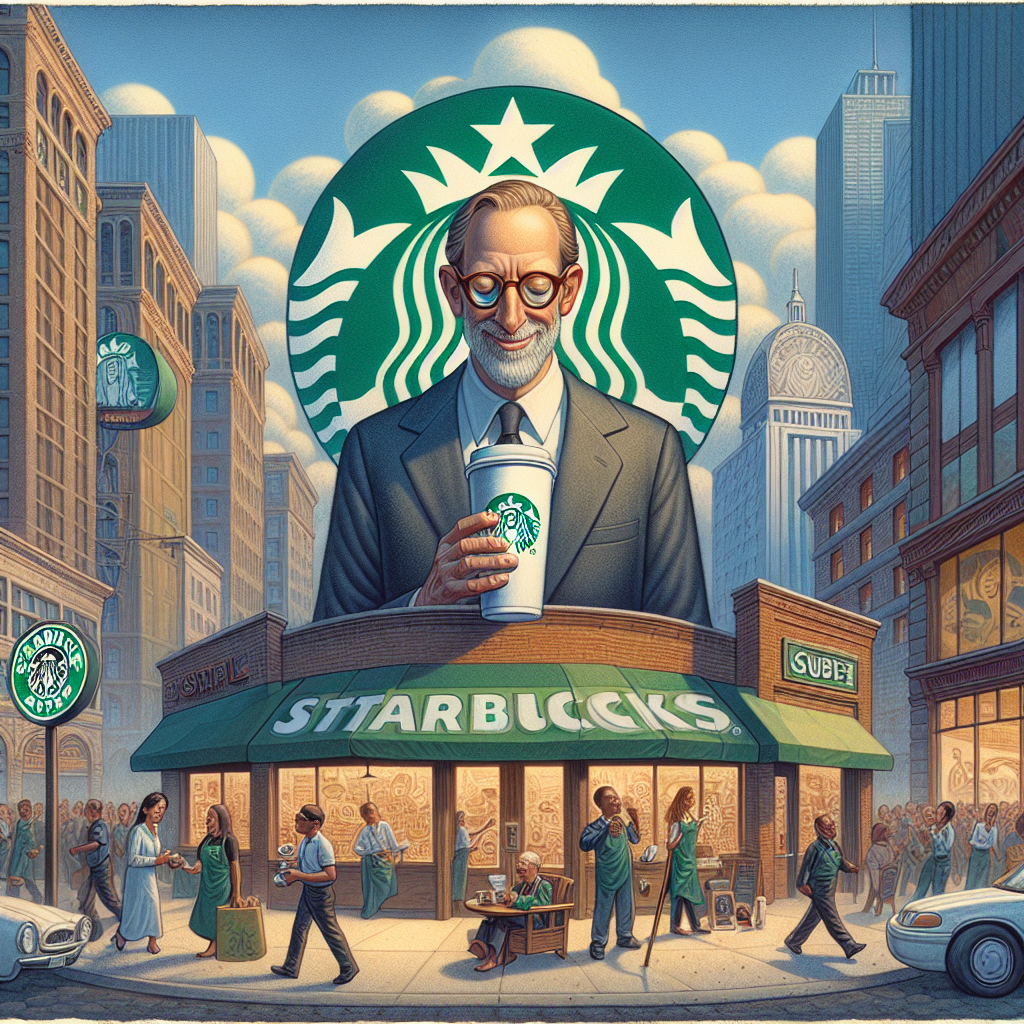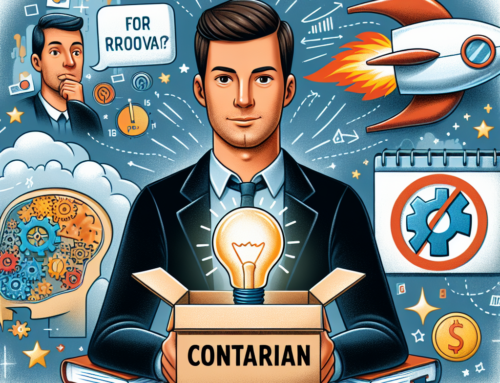
The Early Years: How Howard Schultz Transformed Starbucks into a Global Brand
In the early 1980s, Starbucks was just a small coffee shop in Seattle, Washington. It was a place where locals would gather to enjoy a cup of coffee and engage in conversation. However, it was not until Howard Schultz came along that Starbucks would become the global brand that it is today.
Howard Schultz was born and raised in Brooklyn, New York. He grew up in a working-class family and was the first in his family to attend college. After graduating from Northern Michigan University, Schultz began his career in sales at Xerox Corporation. It was during this time that he discovered his passion for coffee.
In 1981, Schultz visited Starbucks for the first time. He was immediately drawn to the atmosphere and the quality of the coffee. He saw potential in the small coffee shop and joined the company as the Director of Marketing. However, it was not until a trip to Italy in 1983 that Schultz had his ”aha” moment.
In Italy, Schultz was captivated by the coffee culture. He noticed that coffee shops were not just a place to grab a quick cup of coffee, but rather a place where people would gather and socialize. He saw the potential for Starbucks to become more than just a local coffee shop, but a place where people could come together and connect over a cup of coffee.
Schultz returned to Seattle with a vision to transform Starbucks into a global brand. However, the owners of Starbucks at the time were not interested in expanding beyond their small local shops. Undeterred, Schultz left Starbucks and opened his own coffee shop called Il Giornale. The shop was a success, and Schultz used the profits to buy Starbucks in 1987.
Under Schultz’s leadership, Starbucks began to expand rapidly. The first Starbucks outside of Seattle opened in Chicago in 1987, followed by Vancouver, British Columbia in 1988. By 1992, there were 165 Starbucks locations across the United States.
One of the key factors in Starbucks’ success was Schultz’s focus on creating a unique and consistent customer experience. He wanted every Starbucks location to have the same look and feel, no matter where it was located. This meant using the same furniture, music, and even the same smell of freshly brewed coffee in every store.
Schultz also introduced the concept of the ”third place.” He wanted Starbucks to be a place where people could go besides their home and work. A place where they could relax, socialize, and enjoy a cup of coffee. This concept resonated with customers, and Starbucks became a popular destination for people to meet, work, or simply enjoy some alone time.
In 1995, Starbucks opened its first international location in Tokyo, Japan. This marked the beginning of Starbucks’ global expansion. Today, Starbucks has over 31,000 locations in 80 countries, making it one of the most recognizable and successful brands in the world.
Schultz’s vision for Starbucks was not just about selling coffee, but about creating a community. He believed that Starbucks had a responsibility to give back to the communities it served. In 1997, Starbucks launched the Starbucks Foundation, which focuses on supporting education, youth, and community development.
In 2008, Schultz stepped down as CEO of Starbucks but remained as the company’s chairman. However, in 2017, he returned as CEO to lead the company through a period of decline. Under his leadership, Starbucks has continued to innovate and adapt to changing consumer preferences, such as introducing mobile ordering and expanding its menu to include more plant-based options.
In conclusion, Howard Schultz’s vision and passion for coffee transformed Starbucks from a small local coffee shop into a global brand. His focus on creating a unique customer experience and giving back to the community has made Starbucks more than just a place to grab a cup of coffee, but a cultural phenomenon. Today, Starbucks continues to thrive and grow, thanks to the vision and leadership of Howard Schultz.
From Local Coffee Shop to Global Empire: The Vision Behind Starbucks’ Expansion
When you think of coffee, one name that likely comes to mind is Starbucks. With over 31,000 stores in 80 countries, Starbucks has become a global empire in the coffee industry. But it wasn’t always this way. In fact, Starbucks started as a small local coffee shop in Seattle, Washington. So how did it become the powerhouse it is today? The answer lies in the vision of its founder, Howard Schultz.
Schultz’s journey with Starbucks began in 1981 when he joined the company as the director of retail operations and marketing. At the time, Starbucks only had four stores and was primarily selling coffee beans and equipment. However, Schultz saw potential in the company and its products. He believed that Starbucks could become more than just a local coffee shop, it could become a global brand.
In 1983, Schultz traveled to Italy and was inspired by the coffee culture there. He saw how coffee shops were not just a place to grab a quick cup of coffee, but a place to gather, socialize, and relax. This experience sparked the idea of creating a similar coffee culture in the United States. Schultz wanted to bring the Italian coffee experience to America and make it accessible to everyone.
With this vision in mind, Schultz left Starbucks in 1985 to start his own coffee company, Il Giornale. However, in 1987, he returned to Starbucks and bought the company with the help of investors. This was the beginning of Starbucks’ global expansion.
Schultz’s first step in expanding Starbucks was to focus on the quality of the coffee. He believed that in order to create a successful global brand, the coffee had to be consistently excellent. This meant sourcing high-quality beans, roasting them to perfection, and training baristas to make the perfect cup of coffee every time. This attention to detail and commitment to quality set Starbucks apart from other coffee chains and helped to establish its reputation as a premium coffee brand.
But it wasn’t just about the coffee. Schultz also wanted to create a unique and inviting atmosphere in Starbucks stores. He wanted customers to feel like they were part of a community when they walked into a Starbucks. This led to the creation of the iconic Starbucks logo, which features a siren from Greek mythology. The logo was meant to represent the seafaring history of coffee and the idea of exploration and adventure.
In addition to the logo, Schultz also focused on the design and layout of Starbucks stores. He wanted each store to have its own unique character while still maintaining the overall Starbucks aesthetic. This attention to detail and design helped to create a welcoming and comfortable atmosphere for customers, making them want to come back again and again.
Another key aspect of Schultz’s vision for Starbucks was to create a company that was socially responsible. He believed that businesses had a responsibility to give back to the communities they served. This led to initiatives such as the Starbucks Foundation, which supports education and community development projects, and the Ethos Water brand, which helps to provide clean water to communities in need.
Today, Starbucks continues to expand globally, with new stores opening in countries such as China, India, and Brazil. This growth is a testament to Schultz’s vision and his commitment to creating a global brand that is more than just a coffee shop. Starbucks has become a place where people can come together, connect, and enjoy a great cup of coffee.
In conclusion, Howard Schultz’s vision for Starbucks has been the driving force behind its global expansion and success. From focusing on quality and creating a unique atmosphere to being socially responsible, Schultz’s vision has shaped Starbucks into the global empire it is today. So the next time you grab your favorite Starbucks drink, remember the man behind the vision and the journey that turned a local coffee shop into a global phenomenon.
Innovative Strategies: How Howard Schultz Revolutionized the Coffee Industry
Howard Schultz is a name that is synonymous with Starbucks, the world’s largest coffee chain. But who is Howard Schultz and what is the vision behind Starbucks’ global dominance? In this article, we will take a closer look at the man behind the brand and the innovative strategies he used to revolutionize the coffee industry.
Howard Schultz was born in Brooklyn, New York in 1953. He grew up in a working-class family and was the first in his family to attend college. After graduating from Northern Michigan University, Schultz began his career in the coffee industry as a salesperson for a small coffee company called Hammarplast. It was during this time that he first encountered Starbucks, a small coffee shop in Seattle that sold high-quality coffee beans.
In 1982, Schultz joined Starbucks as the director of retail operations and marketing. However, it was during a trip to Italy in 1983 that Schultz had a vision for the future of Starbucks. He was inspired by the Italian coffee culture and the idea of creating a ”third place” between home and work where people could gather and enjoy high-quality coffee. This vision would become the foundation for Starbucks’ global dominance.
Schultz’s first innovative strategy was to expand Starbucks beyond just selling coffee beans and equipment. He wanted to create an experience for customers, a place where they could relax and enjoy their coffee. In 1987, he opened the first Starbucks store outside of Seattle in Chicago. This was followed by the opening of stores in Vancouver and Portland. By 1992, Starbucks had grown to 165 stores across the United States.
But it wasn’t just about expanding the number of stores, Schultz also focused on creating a unique atmosphere in each store. He believed that the design and layout of the stores were just as important as the quality of the coffee. Each store was designed to reflect the local community and provide a comfortable and inviting space for customers to gather. This attention to detail and customer experience set Starbucks apart from other coffee chains and helped to build a loyal customer base.
Another key strategy that Schultz implemented was the use of partnerships and collaborations. In 1993, Starbucks partnered with Barnes & Noble to open coffee shops inside their bookstores. This partnership not only increased Starbucks’ visibility but also introduced their brand to a new audience. This was followed by collaborations with companies like PepsiCo and Kraft Foods to distribute Starbucks products in grocery stores and other retail outlets.
In 1995, Starbucks made its first international expansion by opening a store in Japan. This was followed by stores in Singapore, the Philippines, and other countries in Asia. Schultz’s vision of creating a global brand was becoming a reality. By 2000, Starbucks had over 3,000 stores worldwide.
One of the most significant and controversial strategies that Schultz implemented was the introduction of the Starbucks Card in 2001. This prepaid card allowed customers to load money onto it and use it to make purchases at Starbucks stores. This not only increased customer loyalty but also provided valuable data for the company to analyze customer behavior and preferences.
In 2008, Schultz stepped down as CEO of Starbucks but remained as the company’s chairman. However, he returned as CEO in 2008 during the global financial crisis. During this time, he implemented cost-cutting measures and closed underperforming stores. He also focused on expanding Starbucks’ presence in emerging markets like China and India.
Today, Starbucks has over 31,000 stores in 80 countries and is the world’s largest coffee chain. Howard Schultz’s vision and innovative strategies have revolutionized the coffee industry and created a global brand that is synonymous with high-quality coffee and a unique customer experience. His leadership and passion for the brand have cemented Starbucks’ position as a leader in the coffee industry and will continue to shape its future.
Building a Culture of Community: The Impact of Starbucks’ Social Responsibility Initiatives
Howard Schultz, the founder and former CEO of Starbucks, had a vision that went beyond just selling coffee. He wanted to create a company that not only provided high-quality products but also made a positive impact on the world. This vision has been the driving force behind Starbucks’ global dominance and success.
One of the key ways that Starbucks has built a culture of community is through its social responsibility initiatives. From the very beginning, Schultz made it a priority to give back to the communities where Starbucks operates. This commitment to social responsibility has not only benefited the communities but has also helped to build a loyal customer base.
One of the most well-known initiatives is Starbucks’ commitment to ethically sourcing its coffee beans. In 2000, Schultz visited coffee farms in Africa and saw firsthand the struggles that coffee farmers faced. He knew that Starbucks had the power to make a positive impact on these communities by paying fair prices for their coffee beans. This led to the creation of the Coffee and Farmer Equity (C.A.F.E.) Practices program, which ensures that coffee is sourced ethically and sustainably.
Through this program, Starbucks has been able to improve the lives of coffee farmers and their communities. They have provided access to education, healthcare, and clean water, as well as promoting sustainable farming practices. This not only benefits the farmers but also ensures a steady supply of high-quality coffee for Starbucks.
In addition to ethical sourcing, Starbucks has also made a commitment to environmental sustainability. They have set ambitious goals to reduce their environmental footprint, such as reducing water usage and increasing the use of renewable energy. They have also implemented recycling and waste reduction programs in their stores.
But Starbucks’ social responsibility initiatives go beyond just their own operations. They have also made a significant impact through their community service programs. One of these programs is the Starbucks Community Service Leave program, which allows employees to take paid time off to volunteer in their communities. This has not only benefited the communities but has also fostered a sense of pride and purpose among Starbucks employees.
Another notable initiative is the Starbucks Foundation, which supports organizations that focus on youth, education, and community development. Through this foundation, Starbucks has been able to make a positive impact on the lives of young people around the world. They have also partnered with organizations like Feeding America to help fight hunger in the United States.
But perhaps one of the most significant ways that Starbucks has built a culture of community is through its commitment to diversity and inclusion. Schultz has always believed in creating a company that reflects the diversity of its customers. This has led to initiatives such as the Starbucks College Achievement Plan, which provides full tuition coverage for eligible employees to earn a bachelor’s degree.
In addition, Starbucks has made a commitment to hiring veterans, refugees, and individuals from marginalized communities. This not only provides job opportunities but also creates a diverse and inclusive work environment.
Overall, Starbucks’ social responsibility initiatives have had a significant impact on the company’s success. By prioritizing ethical sourcing, environmental sustainability, community service, and diversity and inclusion, Starbucks has built a loyal customer base and a strong company culture. Howard Schultz’s vision of creating a company that makes a positive impact on the world has truly been realized through these initiatives.
The Future of Starbucks: Howard Schultz’s Vision for Continued Growth and Success
When you think of coffee, one name that likely comes to mind is Starbucks. The iconic coffee chain has become a household name, with over 31,000 stores in 80 countries around the world. But what many people may not know is the man behind this global success – Howard Schultz.
Schultz, a Brooklyn native, joined Starbucks in 1982 as the Director of Marketing. At the time, Starbucks only had four stores in Seattle. However, Schultz saw potential in the company and its product – high-quality coffee. He believed that Starbucks could become more than just a local coffee shop, and he had a vision for its future.
In 1987, Schultz left Starbucks to start his own coffee company, Il Giornale. But two years later, he returned to Starbucks as the CEO and began to implement his vision for the company. He wanted to create a “third place” – a place between work and home where people could relax, socialize, and enjoy a cup of coffee. This concept was the foundation of Starbucks’ success.
Under Schultz’s leadership, Starbucks expanded rapidly, opening stores in new cities and countries. By 1992, the company went public, and Schultz became a billionaire. However, he didn’t let this success stop him from pursuing his vision for Starbucks. He continued to focus on creating a unique and welcoming experience for customers, which included providing excellent customer service and offering a variety of high-quality coffee blends.
In the late 1990s, Starbucks faced some challenges as the company grew too quickly, and the quality of its coffee suffered. Schultz recognized this and made some changes to get the company back on track. He closed underperforming stores, retrained employees, and refocused on the quality of their coffee. These changes paid off, and Starbucks continued to grow and expand globally.
In 2008, Schultz stepped down as CEO but remained as the company’s chairman. However, in 2017, he returned as CEO to lead the company through a challenging time. Starbucks faced criticism and boycotts after an incident in one of its stores where two black men were arrested for sitting without ordering. Schultz took swift action, closing all stores for a day to conduct racial bias training for employees. This move showed his commitment to his vision of creating a welcoming and inclusive environment for all customers.
Schultz’s vision for Starbucks has also extended beyond just coffee. In 2008, the company launched its first non-coffee beverage, the Frappuccino, which became an instant hit. This move opened the door for Starbucks to expand its menu to include food items, such as pastries, sandwiches, and salads. Today, Starbucks is not just a coffee shop but a destination for breakfast, lunch, and snacks.
Another significant aspect of Schultz’s vision for Starbucks is its commitment to social responsibility. In 1997, the company established the Starbucks Foundation, which focuses on supporting education, community development, and environmental sustainability. Starbucks also sources its coffee ethically, ensuring fair wages and working conditions for farmers. This commitment to social responsibility has helped to build a positive reputation for the company and attract socially conscious customers.
As Schultz stepped down as CEO in 2017, he left behind a company that had grown from four stores to over 28,000 stores worldwide. His vision for Starbucks has not only made it a global success but has also influenced the coffee industry as a whole. Today, many coffee shops strive to create a similar “third place” experience for their customers, thanks to Schultz’s vision.
In conclusion, Howard Schultz’s vision for Starbucks has been the driving force behind its global dominance. His focus on creating a unique and welcoming experience for customers, commitment to quality, and social responsibility has set Starbucks apart from its competitors. As the company continues to grow and evolve, Schultz’s vision will undoubtedly continue to guide its success.
Vi har mång spännande event inom Entreprenörskap, Investering och Personlig Utveckling. Du kan se alla här:
www.swedishwealthinstitute.se/event




